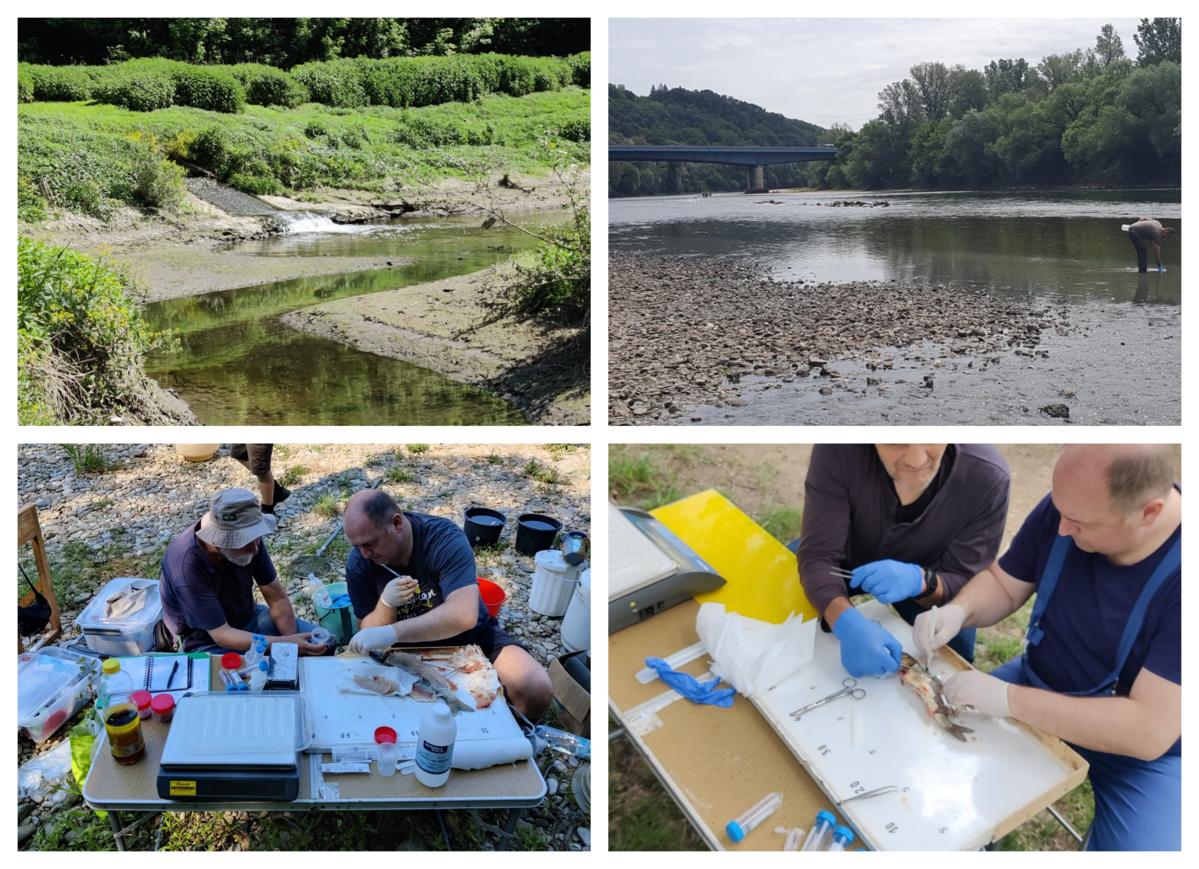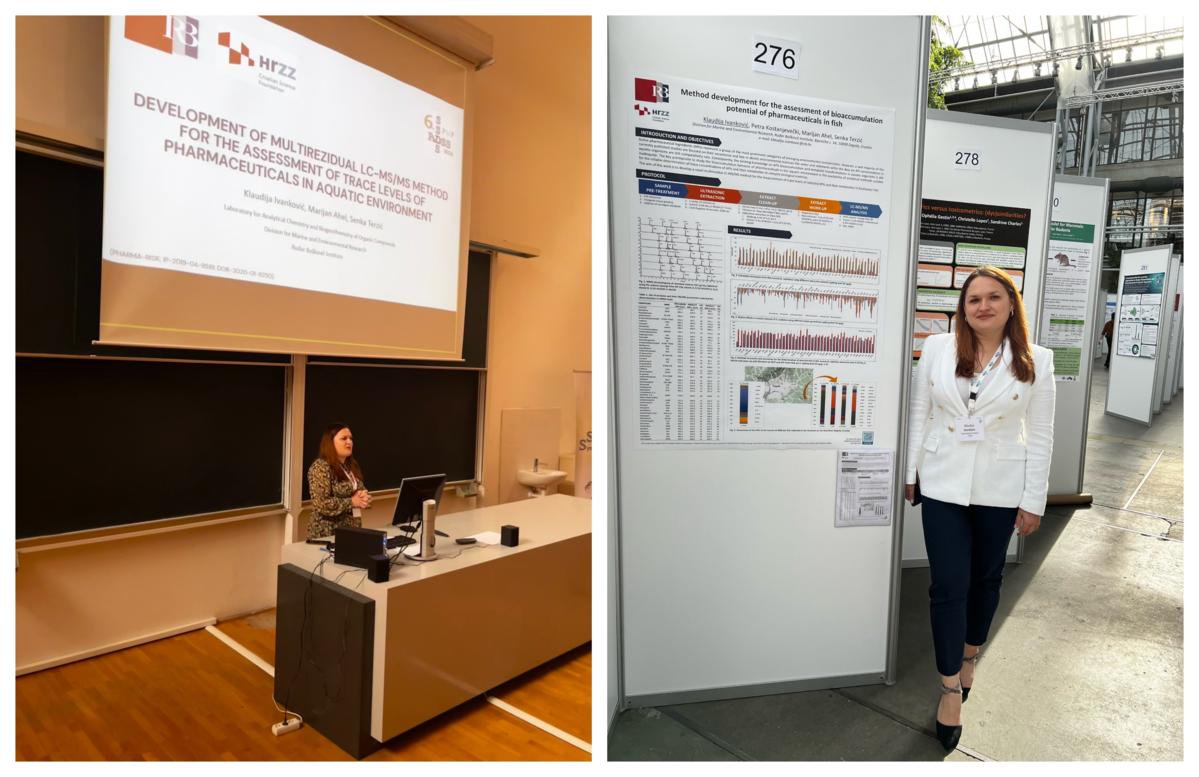The problem of environmental contamination with pharmaceutical chemicals has been widely recognized over the past 20 years. The current literature is strongly dominated by studies focused on assessing the exposure concentrations in abiotic matrices (e.g. water and sediments) while reports on the pharmaceutical concentrations in aquatic organisms remain comparatively scarce. However, when considering the possible biological effects, the aqueous exposure concentrations are only an indirect measure of potential toxicity, while the key parameter which determines the substance's potential for adverse effects is its internal concentration in the organism. Consequently, this project aims to provide new insights into the bioaccumulation and metabolic behaviour of pharmaceuticals in freshwater organisms, which is essential for an improved risk assessment of these contaminants as well as for their scientifically-sound prioritization. The project plan includes several interconnected phases, from method development and laboratory-controlled exposure experiments to field studies. Highly specific analytical methods for quantitative multiresidue determination of trace levels of selected pharmaceutical compounds in different environmental matrices (biota, water, sediment) will be developed and validated. These methods will be applied in carefully planned models and field experiments focusing on the characterization of the pharmaceutical exposome in freshwater fish. The model bioaccumulation experiments will be performed using zebrafish (Danio rerio) as the target organism while considering different exposure scenarios. The biochemical responses in fish will be followed by measuring the induction of the major cytochrome P450 detoxification enzymes. As its final step, the project includes a ground-truthing study in the Sava River to assess the pharmaceutical exposome's environmental relevance and collect the critical data for prioritization of individual pharmaceutical contaminants.
PROJECT OBJECTIVES
- Development of multiresidue and multiclass analytical methods for determination of trace levels of pharmaceutical compounds in river water, river sediment, and biota.
- Study of accumulation and depuration kinetics of selected pharmaceutical compounds in the model fish organism Danio rerio.
- Determination of bioaccumulation factors of selected pharmaceuticals in fish exposed to a mixture of pharmaceuticals by applying different exposure scenarios.
- Study of metabolic transformations of selected pharmaceuticals in fish.
- Assessment of the bioaccumulation factors of pre-selected pharmaceuticals in feral fish.
- Risk assessment and prioritization of selected pharmaceuticals.
PROJECT REALIZATION
1) ANALYTICAL METHOD DEVELOPMENT (OBJECTIVE 1)
- Analytical methods (LC-MS/MS; QqQ) were developed for the quantitative multiclass determination of traces of 44 pharmaceuticals in surface water, wastewater, river sediment, and different fish tissues, with an emphasis on careful optimization of biota sample extraction and cleanup procedures.
- Developed analytical methods were evaluated on samples collected during preliminary sampling on the Sava River.
- Based on the achieved results, a manuscript was prepared under the title „Multiclass analysis of drug residues in water and fish for bioaccumulation potential assessment”.
- The main components of the co-extracted matrix in fish sample extracts were identified using a coupled system of ultra-high-performance liquid chromatography and high-resolution mass spectrometry (UPLC-QTOF MS), which provides the basis for further optimizing cleanup procedures.
2) MODEL EXPOSURE EXPERIMENTS (OBJECTIVES 2-4)
- Model experiments to determine the kinetics of accumulation and elimination of 20 pharmaceuticals in zebrafish (Danio rerio) were conducted.
- Model experiments of chronic exposure of zebrafish (Danio rerio) to a mixture of 20 pharmaceuticals using 3 different exposure scenarios were conducted.
- Model experiments of the biotransformation of azithromycin and methadone in fish were conducted, using intraperitoneal application and external exposure.
3) FIELD STUDY (OBJECTIVES 5-6)
- River water samples and fish samples were collected at selected locations on the Sava River
DISSEMINATION OF PROJECT RESULTS
- Ivanković, K., Kostanjevečki, P., Ahel, M., Terzić, S., Method development for the assessment of bioaccumulation potential of pharmaceuticals in fish. SETAC Europe 32nd Annual Meeting: Abstract book. Copenhagen: Society of Environmental Toxicology and Chemistry Europe (SETAC Europe), 2022. pg. 510-510 (poster, abstract)
- Ivanković, K., Ahel, M., Terzić, S., Development of multirezidual LC-MS/MS method for the assessment of trace levels of pharmaceuticals in aquatic environment. 6th Faculty of Science PhD student symposium: book of abstracts. Zagreb: Faculty of Science, University of Zagreb, 2022. pg. 102-103 (presentation, abstract)
- Ivanković, K., Farmaceutski ekspozom slatkovodnih organizama – prisutnost i utjecaj farmaceutika na vodene organizme. Znanstvena škola o okolišu 2021: sveobuhvatni pristup istraživanju antropogenih pritisaka na okoliš: knjiga sažetaka. Zagreb, 2022. pg. 8-8 (presentation, abstract)
PUBLICATIONS
Senta, I., Terzić, S., Ahel, M., 2021. Analysis and occurrence of macrolide residues in stream sediments and underlying alluvial aquifer downstream from a pharmaceutical plant. Environ. Pollut. 273, 116433. https://doi.org/10.1016/j.envpol.2021.116433





